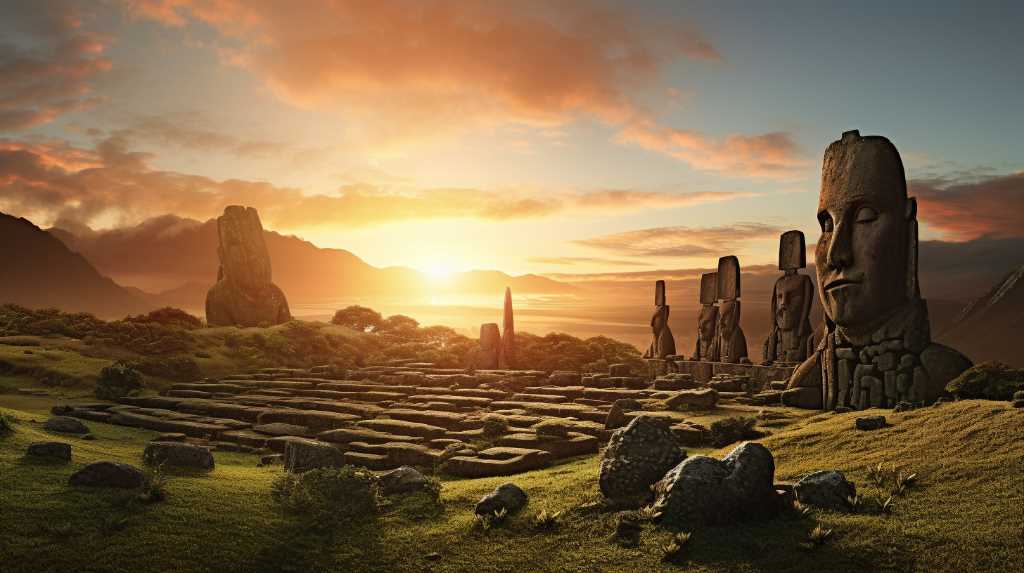
Unraveling the Mysteries: Visit the 10 Untouched Ancient Archeological Sites in Oceania
You're about to embark on an exciting journey! We're delving into Oceania's untouched archaeological sites, teeming with ancient secrets.
From the enigmatic Moai statues of Easter Island to the historic Lake Mungo, you'll unravel intriguing mysteries of our ancestors.
You'll explore natural wonders like Ayers Rock and the enchanting Waitomo Caves.
Get ready, this isn't just a trip—it's a journey through time, revealing tales etched in stone and whispered by the ocean breeze.
Key Takeaways
- Oceania is rich in untouched history and culture, with indigenous tribes having distinct languages and traditions.
- The archeological sites in Oceania, such as the Moai statues of Easter Island, Ayers Rock, Nan Madol, and Lake Mungo, offer insights into ancient civilizations and human evolution.
- Cultural and historical sites like Kakadu National Park, Waitomo Caves, Burrup Peninsula, and Lake Condah provide a unique glimpse into the past and the lives of our ancestors.
- The archeological sites in Oceania, such as Warreen Cave, also offer valuable information about early human innovation, prehistoric artistic expression, and extinct biodiversity.
The Intrigue of Ancient Oceania
You'll find that there's an immense wealth of untouched history and culture in Ancient Oceania, waiting to captivate your curiosity. As you delve into this unexplored sphere, you'll uncover the remnants of civilizations that thrived in isolation, shaping an inherently unique cultural heritage.
The indigenous tribes, each with its distinct language and traditions, lend a rich tapestry to Oceania's past. From the sacred Maori marae to the intricate Micronesian latticework stone structures, these age-old relics narrate a tale of human adaptation, survival, and ingenuity.

Unravel the complexities of the Lapita pottery designs, or marvel at the Polynesian navigation techniques. In each relic, ritual, and art form, there's a piece of a puzzle that, when pieced together, paints a vibrant picture of the ancient Oceanic world.
Charm of Easter Island's Moai Statues
So, how about we start with the enigmatic Moai statues of Easter Island? You'll be captivated by their immensity, standing tall with a tangible aura of mystery. Carved from compressed volcanic ash, they're a testament to the intricate craftsmanship of the Rapa Nui people.
Each statue has its own distinct features, a signature of the artisan who created it. But it's their sheer size that'll astound you. Most Moai average a staggering four meters in height and weigh over 14 tonnes.
Their purpose? To honor ancestors, they were positioned to face the villages, their backs to the sea, standing guard over the inhabitants. They're a fascinating puzzle piece in Oceania's rich archeological tapestry, waiting for you to explore and discover.
Natural Wonder: Ayers Rock
Continuing your journey through Oceania's ancient marvels, Australia's Ayers Rock demands your attention next. Known locally as Uluru, this sandstone monolith soars 348 meters above the arid outback. Its reddish hue, changing with the sunlight, offers a captivating sight.
But Ayers Rock isn't just a natural wonder. It's a sacred site to the Anangu, the local indigenous people. The cave paintings and the Tjukurpa, or Dreamtime stories, etched into the rock's surface, bear testament to their rich cultural heritage.
Despite the modern influx of tourists, Uluru maintains its untouched facade, preserving the ancient wisdom it carries. To truly appreciate Ayers Rock, it isn't enough to just witness its grandeur. You'll need to understand the deep spiritual significance it holds for the Anangu people.

Significance of Nan Madol Uncovered
Next on your list should be the impressive Nan Madol, an ancient city that's often referred to as the 'Venice of the Pacific'. This stunning site, located off the coast of Pohnpei, is an architectural marvel, with its intricate network of canals and artificial islets. You'll be fascinated by the colossal basalt rock structures, a testament to the engineering prowess of the Saudeleur dynasty who built Nan Madol nearly a millennium ago.
Unraveling its mysteries, researchers believe that this city served as a residential and ceremonial center. Its strategic isolation indicates it was likely a place for elites, reinforcing social control. As you marvel at Nan Madol's wonders, you'll be intrigued by the historic importance of our next destination, Lake Mungo.
Historic Importance of Lake Mungo
Consider the historic importance of Lake Mungo, an archeological site in Australia known for its ancient burial rituals.
The site gives insight into the chronology of human settlement in Oceania, with evidence dating back over 40,000 years.
Here, you'll uncover a time-capsule of human history, preserved in the soil and artifacts of this unique location.
Lake Mungo's Historical Significance
You'll find Lake Mungo's historical significance astounding, as it's home to some of the oldest human remains ever discovered in Australia. The artifacts and fossils found here offer a rare glimpse into the early human life dating back nearly 50,000 years, making it an archeological treasure.
- The famous Mungo Man and Mungo Lady, the oldest human remains in Australia, were discovered here.
- Fossils and artifacts unearthed provide insight into Aboriginal culture and lifestyle.
- The stratified layers of the lake reveal environmental changes over thousands of years.
- It's a World Heritage Site, recognized for its contribution to understanding human evolution.
In essence, Lake Mungo isn't just a lake; it's a testament to human history and evolution. The site's untouched nature makes it a pristine source of knowledge.

Uncovering Burial Rituals
Digging deeper into the historic importance of Lake Mungo, one can't overlook the significance of the burial rituals discovered at this site. These rituals, dating back around 40,000 years, provide a glimpse into the spiritual beliefs and practices of the time.
The site's importance is underscored by the discovery of Mungo Lady and Mungo Man, the earliest known examples of ritual burials in the world. These burials suggest a sophisticated understanding of death and the afterlife. The careful placement of the bodies, the use of ochre, and other burial practices indicate a complex belief system.
Even today, you're bound to marvel at the cultural richness these practices reveal about our ancestors. It's a stark reminder that our ancient predecessors weren't so different from us.
Chronology of Human Settlement
As you delve into the chronology of human settlement, you'll find that Lake Mungo holds a pivotal role, with evidence of continuous human habitation dating back nearly 50,000 years. This site in New South Wales, Australia, is a testament to human endurance and adaptability.
Lake Mungo has yielded numerous artifacts, including tools and hearths, revealing a long history of human technology use.
The Mungo Man, the oldest known human remains in Australia, was discovered here.
Distinct layers of sediment at the site provide a timeline of environmental changes faced by early settlers.
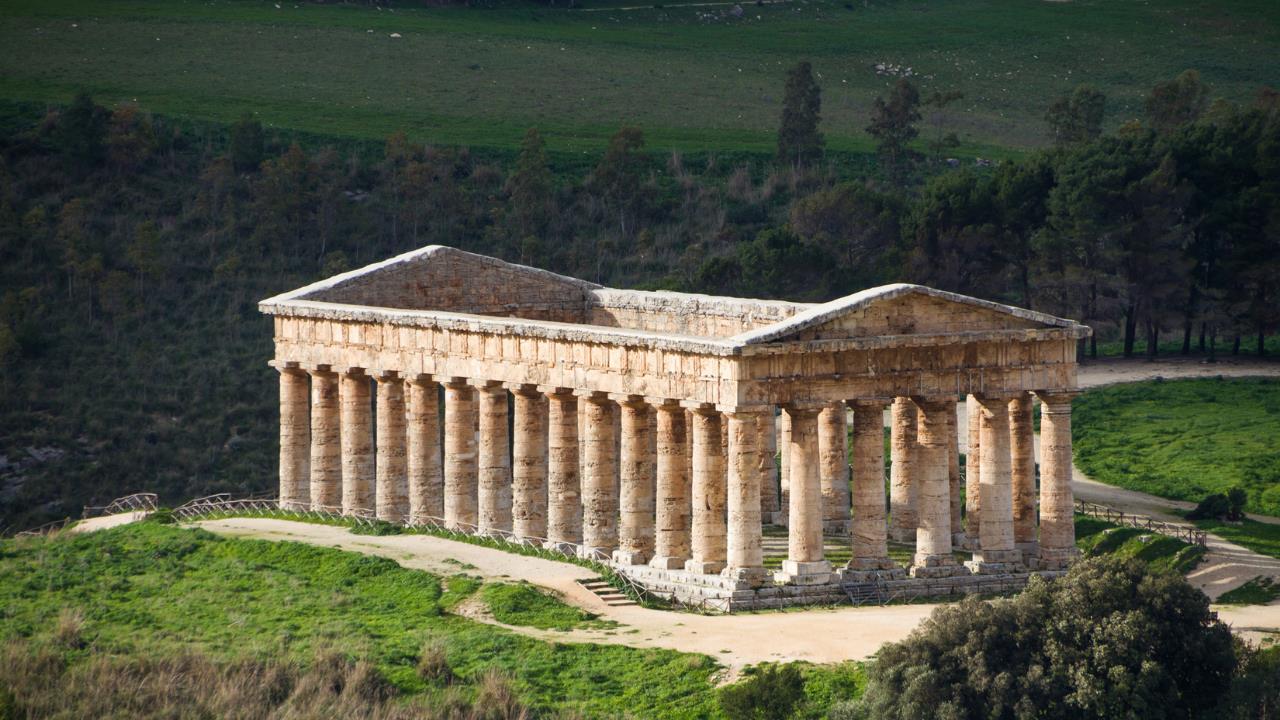
The presence of ochre and shell middens suggest complex cultural practices, including possibly ceremonial activities, among these early humans.
Lake Mungo is a fascinating lens into our shared human past.
Cultural Richness of Kakadu National Park
Next on your journey, you'll encounter the cultural richness of Kakadu National Park, a World Heritage site teeming with ancient art and indigenous culture. Inhabited by Aboriginal people for over 65,000 years, this park is a tapestry of their heritage.
You'll find rock art sites depicting tales from their ancestors, giving you a glimpse into their rich mythology. The flora and fauna here aren't just biologically diverse, they're culturally significant too. Many plant species are used in traditional medicine and crafts.
You'll also discover how the indigenous Bininj/Mungguy people have expertly managed the land, using traditional methods. This park doesn't just offer natural beauty, but also a compelling insight into an ancient culture that's still very much alive.
The Enchanting Waitomo Caves
Leaving behind the cultural richness of Kakadu National Park, you'll find yourself captivated by the enchanting Waitomo Caves in New Zealand. These limestone caves hold a spectacular sight that's millions of years in the making.
- You'll marvel at the twinkling glowworms that light up the caves like a star-studded sky.
- You'll be awed by the intricate stalactite and stalagmite formations.
- You'll feel the thrill of black water rafting through the underground river.
- You'll discover the rich Maori history embedded in these natural wonders.
The Waitomo Caves will leave you spellbound with their ancient beauty and mystique. Their untouched perfection offers a unique glimpse into the past, making them an absolute must-visit on your Oceania adventure.
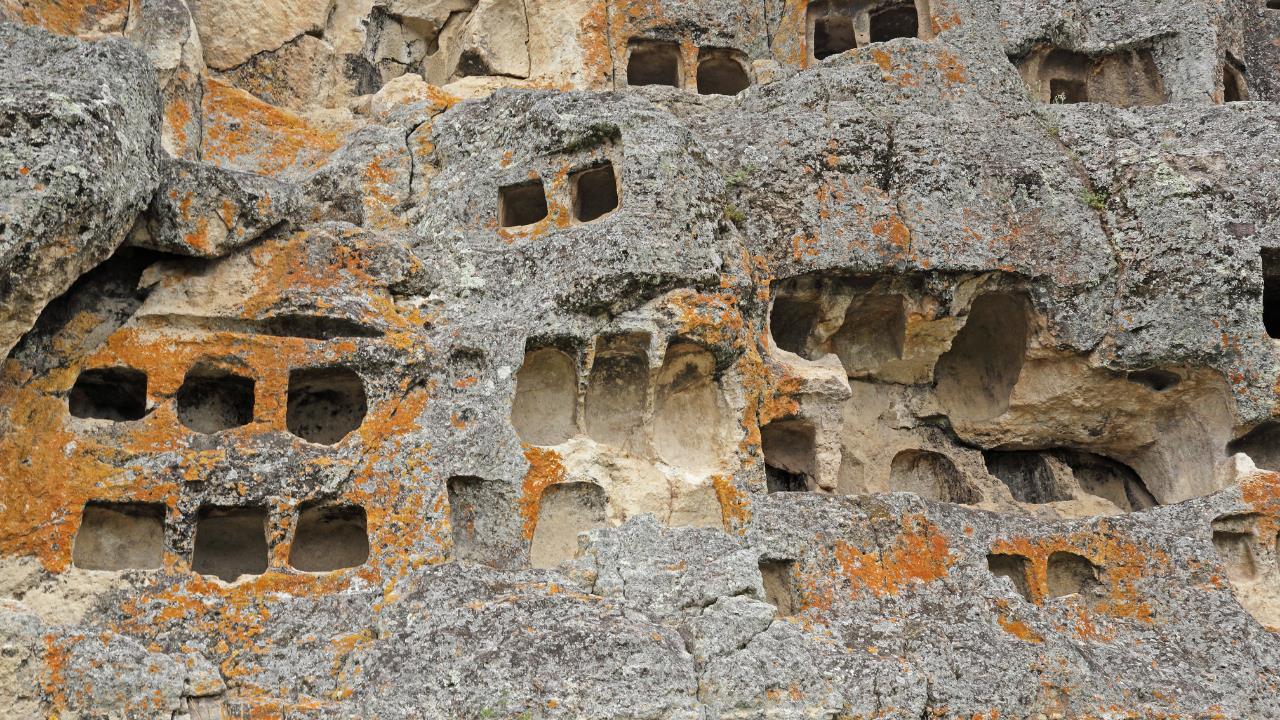
Ancient Artwork at Burrup Peninsula
Australia's Burrup Peninsula will capture your heart with its ancient artwork, untouched by time. It boasts the world's largest outdoor art gallery, with over a million petroglyphs, some dating back 30,000 years. You'll marvel at the intricate carvings depicting indigenous life, from hunting scenes to mythical creatures.
But it's not just the quantity that's impressive; the art's exceptional preservation showcases the artists' skill and creativity. This unique site offers you a glimpse into the past, revealing how our ancestors lived, thought, and expressed themselves. Scientists continue to study these artistic relics, hoping to unravel the mysteries they hold.
Now, prepare to journey from the ancient to the historic as we explore our next destination, Lake Condah.
Lake Condah: A Historic Relevance
You'll find yourself captivated by the historic relevance of Lake Condah, an ancient site in Oceania that's steeped in cultural significance. This archaeological gem in Victoria, Australia, is a testament to the ingenious engineering skills of the Gunditjmara people.
- Lake Condah bears proof of ancient aquaculture systems. You'll see remnants of intricate channels and fish traps that date back over 6,000 years.
- The site is dotted with stone houses, a poignant reminder of a thriving Aboriginal community.
- The lake's eel-smoking trees add to its distinctiveness, reflecting the Gunditjmara's traditional fishing practices.
- Its UNESCO World Heritage status underscores the site's importance, offering a glimpse into an unchanged culture.
In essence, Lake Condah is a living museum, where history unfolds right before your eyes.
Unique Finds at Warreen Cave
As you turn your attention to Warreen Cave, consider its historical significance that's truly a marvel.
The ancient tools found here tell a story of early human innovation and survival.

Interpreting these artifacts, you'll gain a deeper understanding of the cave's inhabitants and their intriguing culture.
Warreen Cave's Historical Significance
In your exploration of Oceania's untouched archeological sites, you'll find that Warreen Cave holds a significant amount of history with its unique discoveries. This site is a treasure trove of artifacts that offer significant insights into the past.
The cave is home to ancient rock art, providing a window into the artistic expression of prehistoric cultures.
Numerous bone fragments from extinct animals shed light on the biodiversity that once existed.
Evidence of early human habitation, such as hearths and stone tools, illustrate the lifestyle of ancient civilizations.
Perhaps most intriguingly, the cave contains remains of a prehistoric Tasmanian Tiger, a rare find indeed.
These discoveries underline Warreen Cave's historical significance and make it a must-visit location.
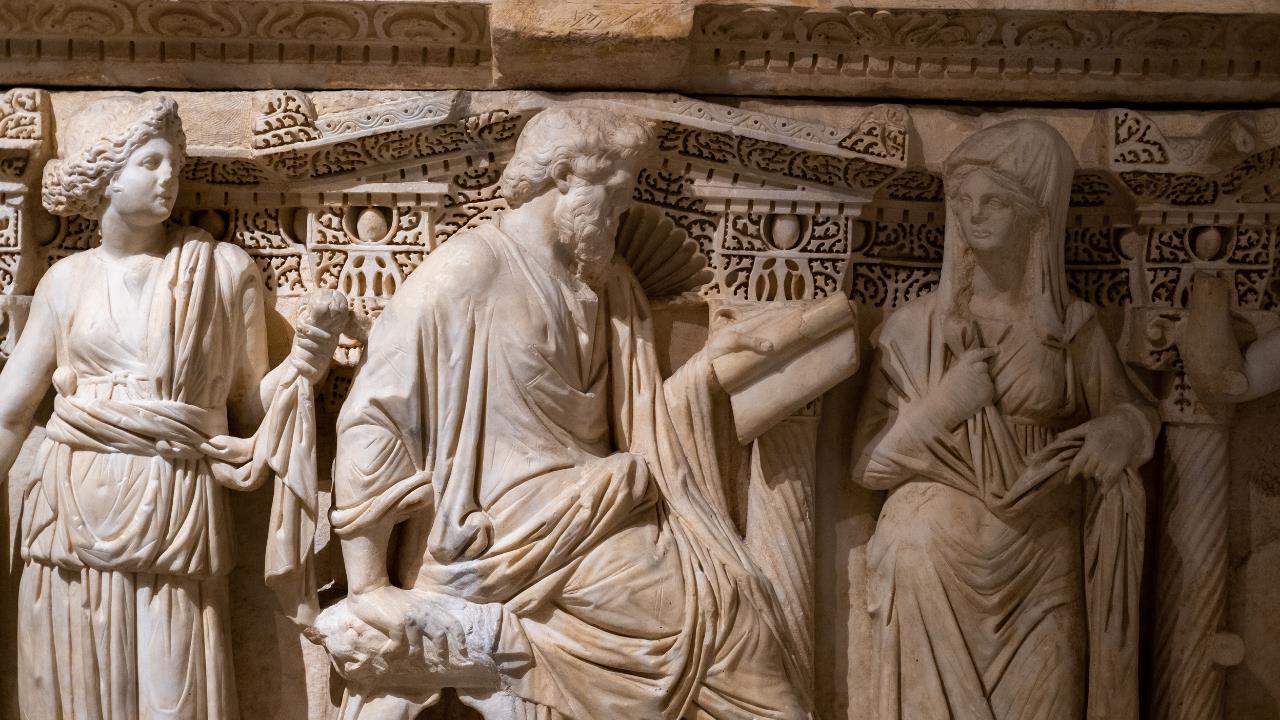
Now, let's delve deeper into the subject of unearthing ancient tools.
Digging deeper into the Warreen Cave, you'll uncover the fascinating world of ancient tools, each revealing a unique facet of prehistoric life. Here, you'll find remnants of stone-age technology, from sharpened flints to rudimentary fishing hooks. Each tool offers a glimpse into the daily routines and survival strategies of our ancient ancestors.
Look closely and you'll notice the intricate markings on a bone needle, hinting at the advent of sewing and clothing production. You'll find stone scrapers, used for cleaning animal hides, suggesting a hunter-gatherer lifestyle. Moreover, the discovery of primitive grinding stones indicates the early development of agriculture.
These tools aren't just relics; they're tangible evidence of mankind's evolutionary journey, illustrating how our forebears adapted and innovated to survive.
Interpretation of Cave Artifacts
Beyond the relics of ancient tools, you'll delve into the world of cave artifacts, discovering unique finds within the depths of Warreen Cave that offer profound insights into the lives of our ancestors. These artifacts aren't just old rocks; they're a testament to human ingenuity, resourcefulness, and survival.
- Ancient Paintings: These colorful impressions provide a glimpse into the spiritual beliefs and daily lives of ancient indigenous societies.
- Bone Tools: You'll find tools crafted from animal bones, a testament to their resourcefulness.
- Ceramic Shards: These fragments hint at a once-thriving pottery tradition.
- Textile Remnants: Though rare, these offer clues about ancient clothing and weaving techniques.
In interpreting these artifacts, you're not just observing; you're connecting with a shared human heritage.
Conclusion
So, you've journeyed through Oceania's untouched ancient archeological sites. From the enigmatic Moai statues of Easter Island to the historic relevance of Lake Condah, you've unraveled the mysteries that these sites hold.
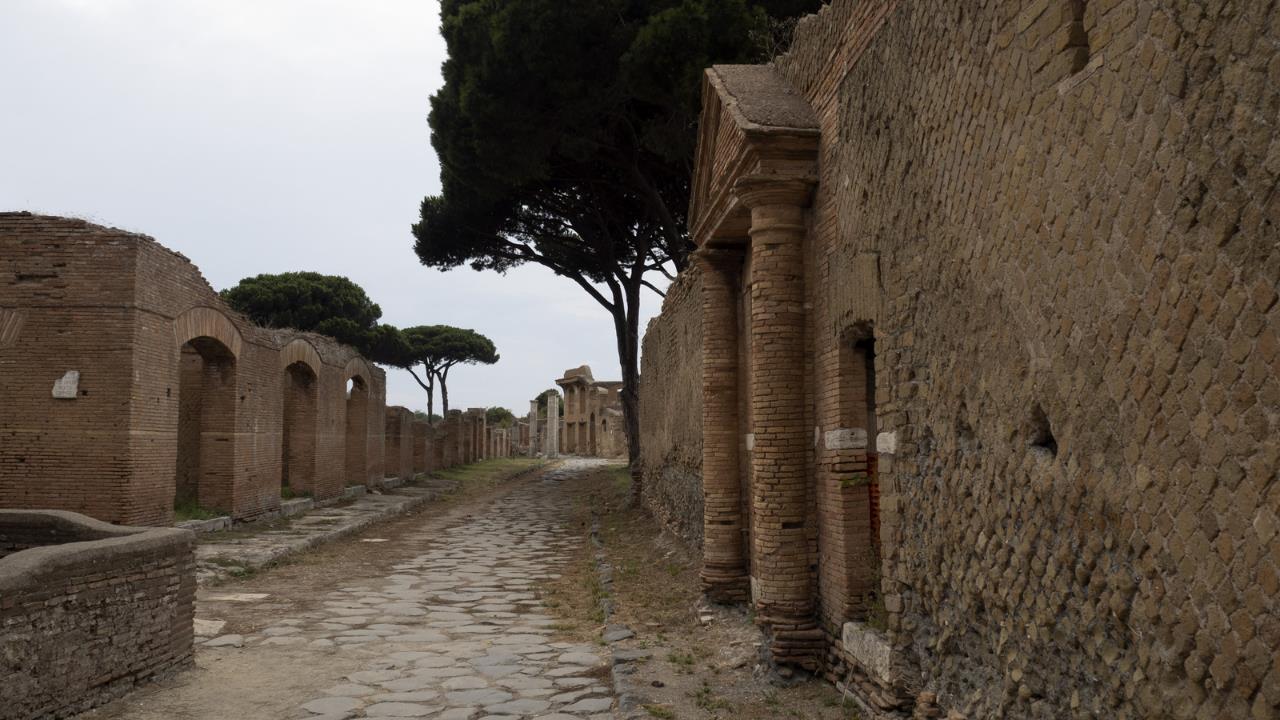
You've explored Ayers Rock, Nan Madol, Lake Mungo, Waitomo Caves, Burrup Peninsula, and Warreen Cave. Each site offering a unique, intriguing insight into the ancient cultures of Oceania.
It's a journey that's sure to have deepened your appreciation for the rich history and diverse cultures the region harbors.
 Backyard GrillingWeekend WarriorsAdvice from DadBeard GroomingTV Shows for Guys4x4 Off-Road CarsMens FashionSports NewsAncient Archeology World NewsPrivacy PolicyTerms And Conditions
Backyard GrillingWeekend WarriorsAdvice from DadBeard GroomingTV Shows for Guys4x4 Off-Road CarsMens FashionSports NewsAncient Archeology World NewsPrivacy PolicyTerms And Conditions
